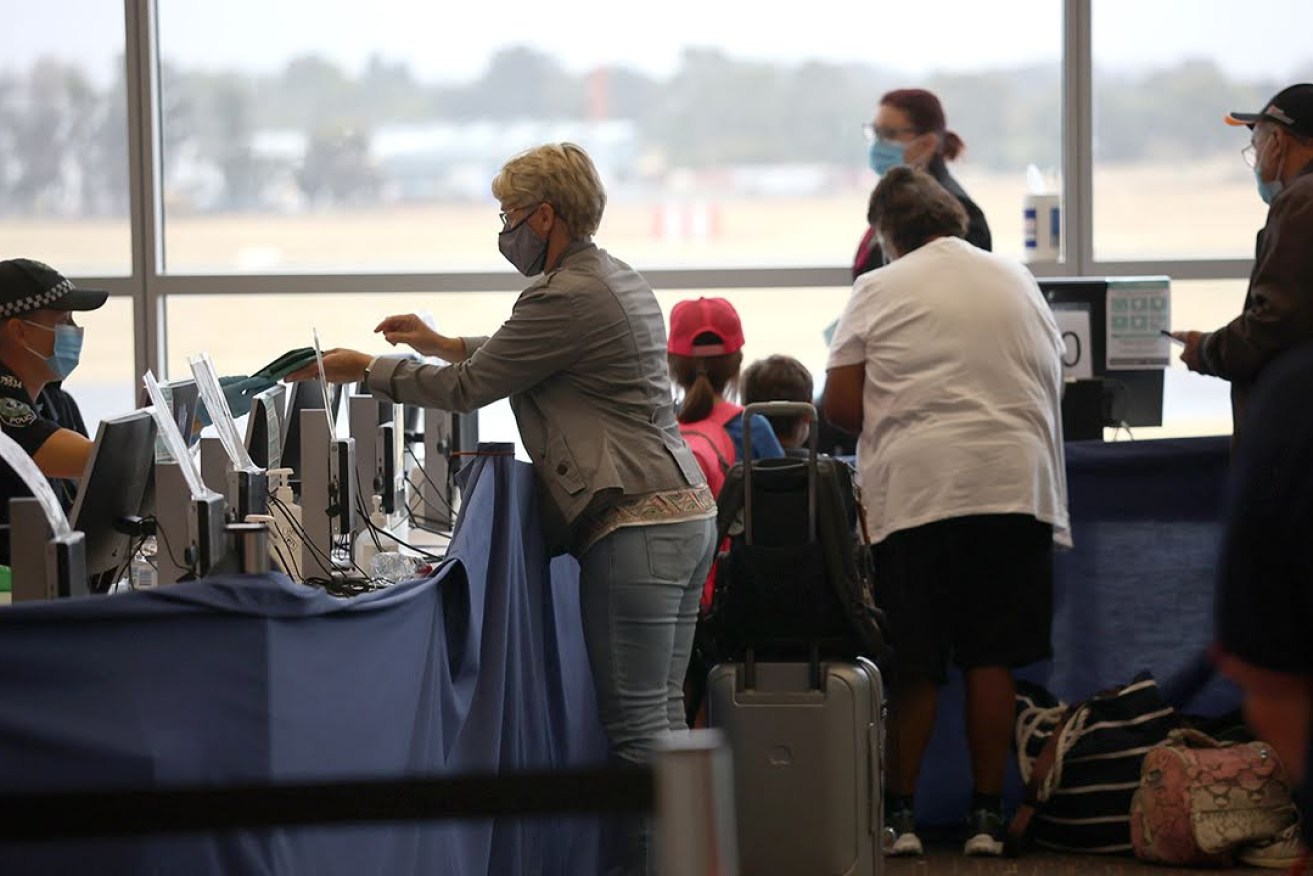‘Unfair’ SA vax data rule hits travellers
A “statistical anomaly” in vaccination data could result in some interstate travellers being forced to quarantine for 14 days if they want to visit South Australia after November 23, with a demographer labelling the State Government’s border policy “peculiar and unfair”.

Photo: Tony Lewis/InDaily
Sydneysider Damiano Fritz wants to return to his hometown of Adelaide to celebrate Christmas with his family and friends.
He last visited Adelaide over Easter, but South Australia’s hard border closure with New South Wales meant he’s spent the past seven months stuck in his adopted city.
The South Australian Government plans to reopen the borders to fully-vaccinated interstate travellers on November 23, but those coming from local government areas with double-dose vaccination rates below 80 per cent will still have to quarantine for 14 days.
Fritz is a resident of the Sydney City Council, which, according to latest federal government data, has a double-dose vaccination rate of just 72.6 per cent and a first-dose coverage of 75.3 per cent.
“It isn’t certain at all that on the current calculations that Sydney LGA will ever exceed 80 per cent, so there’s lots of uncertainty heading into 2022 as to when, if, ever I can come home,” he said.
“It means that I just have to wait and keep on checking to see if the vaccination rates pick up in the LGA.”
According to Australian National University demographer Liz Allen, the federal government vaccination rates are calculated using census data that doesn’t take into account substantial population changes since the start of the coronavirus pandemic.
University students made up a significant chunk of the Sydney City Council population in the 2016 census, with over 35,000 students calling the city home, but many of those students left Australia at the onset of COVID, meaning the area’s vaccination rate accounts for a population that is bigger than its current size.
“During COVID, there has been a considerable population exodus out of capital cities leaving population estimates out of kilter with reality,” Allen said.
“The most recent available estimated resident population (ERP) data should be used to inform and assess the COVID-19 vaccine rollout. This ensures the most accurate understanding of vaccine coverage.
“Sizeable errors in the completeness or accuracy of vaccine coverage has the potential to lead to unfair policies and practices as the country opens up, through implausible vaccination rate calculations.”
Allen said the problem is compounded by the fact the Federal Government calculates the vaccination rates using data based at a fixed point in time.
It’s just a really uncertain and unsatisfactory situation
She said while it’s not surprising that the government would choose a data point and stick to it, doing so makes calculating vaccination rates “potentially intolerably inaccurate the further it is from census”.
“The problem is that ERP data continually changes every three months. We’re dealing with a moving target,” she said.
“Current ERP relies on the base of census 2016, and the areas with substantial change over the past five years have the greatest risks associated with of not embracing moving targets.
“Areas with small, youthful and a higher proportion of First Nations populations will likely face the greatest problems as result of using outdated ERP data.
“I find it a peculiar and unfair practice to place blanket rules about access to states and territories based on LGA rates, rather than individual circumstances.”
Fritz, who received his second vaccination dose in August, said he was unsure whether he was eligible to apply for an exemption to travel into South Australia without having to quarantine.
“I can certainly understand the approach to cautiously relaxing borders and effectively introducing COVID into SA, so from that perspective I think that the federal authorities should find a way to re-run the stats in order to get a truer picture of what is actually going on in Sydney LGA,” he said.
“Failing that, I think that some leniency or some exemption should be applied in SA for residents of Sydney like me who have done the right thing and are just being unfairly locked out.
“It’s just a really uncertain and unsatisfactory situation.”
In a statement, a SA Health spokesperson said the department had “always used the most up-to-date data and advice available to guide our response to COVID-19”.
“Local Government Areas have been used by multiple jurisdictions throughout the pandemic to identify high-risk areas,” they said.
“Commonwealth data, combined with data from other states, will be used to determine vaccination rates and community transmission in interstate jurisdictions.”
InDaily asked the spokesperson to clarify how interstate travellers could find out what vaccinations rates SA Health was using to determine whether they needed to quarantine, but is yet to receive a response.
InDaily also contacted the federal Health Department for comment.
Allen said she understood the difficulty in administering border movements during COVID, but encouraged a more “common-sense approach” to quarantine rules – “especially when these rules are knowingly based on problematic data”.
Premier Steven Marshall said he was aware of the issue.
He said travellers from LGAs that have a vaccination rate of below 80 per cent would only be required to quarantine if there is also community transmission in their area.
“It’s my expectation that this is a statistical anomaly because the denominator is artificially inflated because the international students were in those LGAs (and) they’re not there at the moment,” he said.
“There are very few LGAs that fall into that category at the moment.
“We’ve still got almost two weeks until we get to the 23rd and that will give us some time one, for greater vaccination rates in some of those LGAs, but two, just clarification about that denominator.
“We’ll provide clarity to people ahead of the 23rd.”




